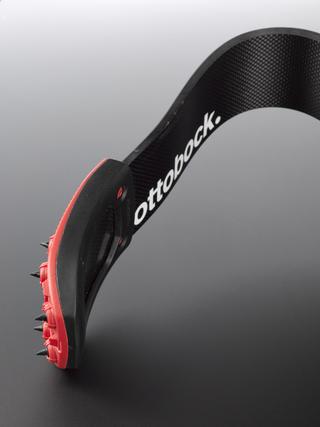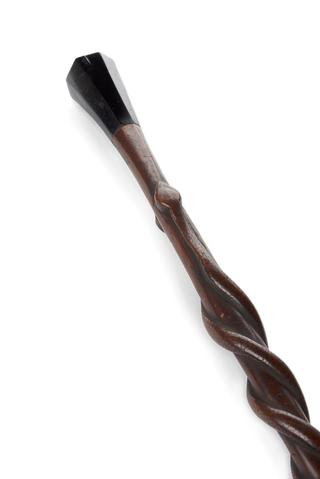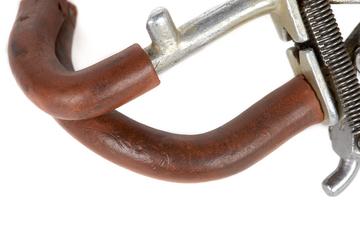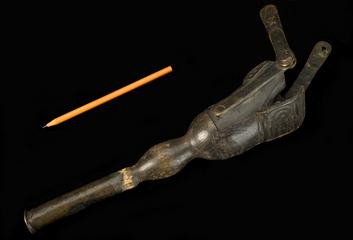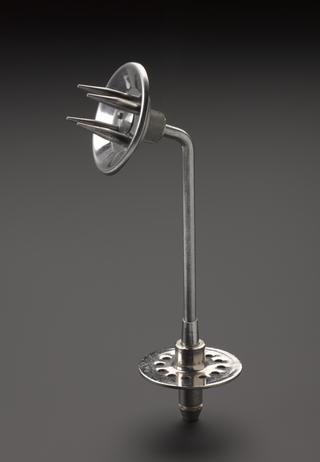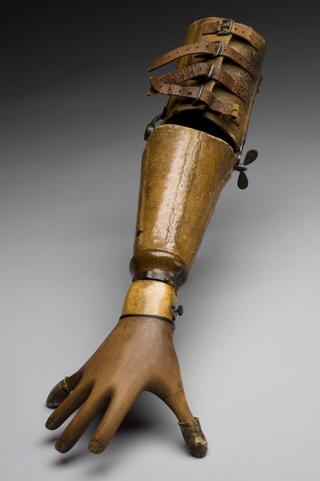




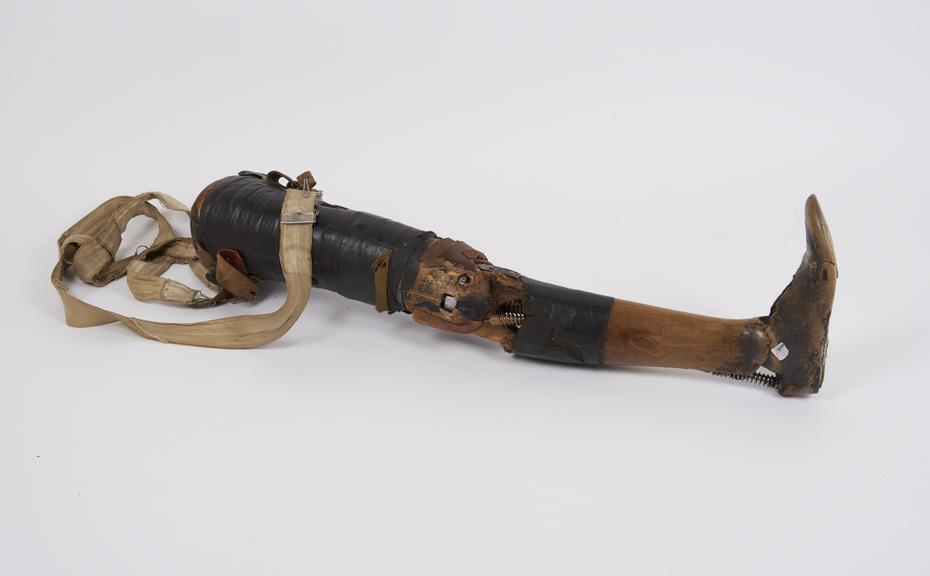


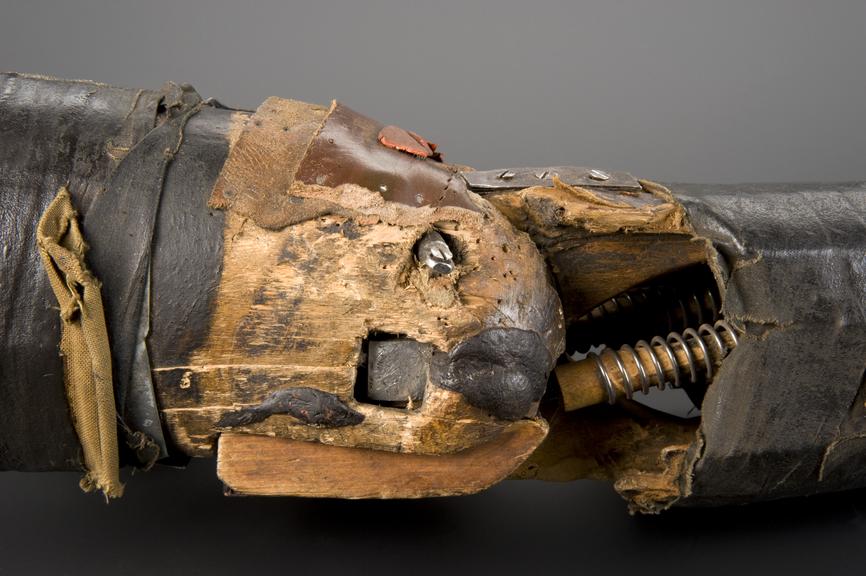
"Anglesey" right above knee prosthesis. Extensive 'home' repairs are evident. Origin unknown, pre-1948 National Health Service.
This prosthetic leg was made for someone who had their leg amputated above the knee. The original owner made extensive home repairs. Artificial limbs are very personal items and the extensive home repairs show the lengths some people will go to keep a limb they feel comfortable with. Gaffer tape, rubber and textiles have all been used.
The Anglesey leg was named after the Marquis of Anglesey, who took to wearing a leg made to this design after he lost one during the Battle of Waterloo in 1815. It was also known as a ‘Clapper’ after the sound the leg made when it was fully extended.
Details
- Category:
- Orthopaedics
- Object Number:
- 1999-481
- Measurements:
-
overall: 192 mm x 912 mm x 312 mm,
- type:
- artificial leg
- credit:
- Richmond Twickenham and Roehampton Healthcare NHS Trust
